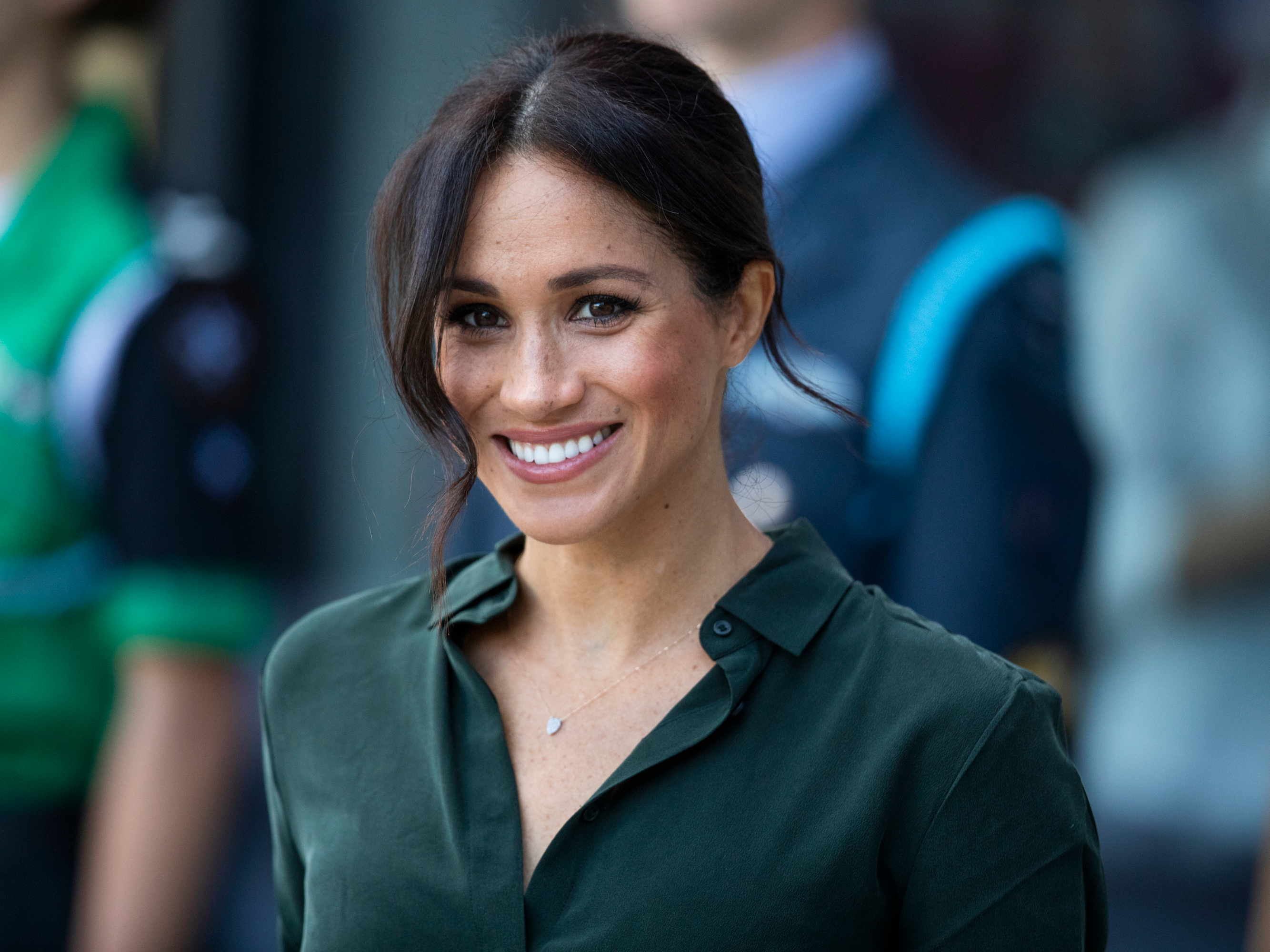- Despite being princesses, both Kate Middleton and Meghan Markle are called duchesses.
- But some members of the royal family, like the queen’s daughter, Princess Anne, are called princesses.
- According to royal historian and academic librarian Marlene Koenig, who runs the blog Royal Musings, only women who were born as princesses can be styled by their own name in the United Kingdom.
- Those who obtain princely status through marriage take on the stylized titles of their husbands.
- Regardless of how their titles are styled, Middleton, Markle, and Anne all share the same status of Her Royal Highness.
- However, Anne outranks Middleton and Markle in the royal family’s order of precedence.
These days, Kate Middleton and Meghan Markle are known around the world as the Duchesses of Cambridge and Sussex, respectively. But, as royal fans may already know, both women are also princesses of the United Kingdom.
Back in 2011, when Middleton married Prince William, Queen Elizabeth II conferred her with the official title Her Royal Highness the Duchess of Cambridge. Likewise, when Markle tied the knot with Prince Harry in May, she became HRH the Duchess of Sussex.
In the UK, HRH is an official style used to address princes (His Royal Highness) and princesses (Her Royal Highness) in the royal family.

While that seems straightforward enough, you may be wondering why Middleton and Markle aren't called Princesses Kate and Meghan, like the late Princess Diana was during her marriage to Prince Charles. And what exactly is the difference between a princess and a duchess, anyway?
To answer these questions, and a few others you may have, we recently spoke to royal historian and academic librarian Marlene Koenig about how members of the royal family get their titles.
First, what does the royal family do?
In general, the role of the British royal family is to help Queen Elizabeth II strengthen "national unity and stability" and support the monarch in her state and national duties as well as her public and charitable service.
But only the members of the family known as working royals carry out official duties in the queen's name, Koenig, an expert on British and European royalty, told INSIDER.
In comparison, non-working royals attend family engagements such as Trooping the Colour on an individual basis, not in service of the monarchy.

According to Koenig, who runs the blog Royal Musings, the current list of working royals includes Charles and his wife, Camilla, Duchess of Cornwall; William and Middleton; Harry and Markle; Princess Anne; Prince Andrew; Prince Edward, Earl of Wessex; his wife, Sophie; Prince Richard and his wife, Birgitte; Prince Edward, Duke of Kent; his wife, Katharine; and Princess Alexandra.
Who can become a prince or princess of the UK?
The title of prince or princess of the UK can only be inherited or gained through marriage - both of which are governed by specific rules.
Let's start with blood royals: For the past century, King George V's 1917 letters patent has determined who has the right to inherit and pass on princely status.
Under George V's written order, all children of the monarch, male-line grandchildren of the monarch, and the eldest living son of the eldest son of the Prince of Wales "have and at all times hold" the title of HRH.

In simpler terms, a reigning monarch's children, regardless of gender, will always hold HRH status. A monarch's sons' children, regardless of gender, will also hold HRH status. And the Prince of Wales' eldest living grandson will also be a prince.
However, it gets a bit more complicated when you throw gender and marriage in the mix.
What happens to royals' titles when they get married?
In the UK, Koenig said, a woman takes her husband's rank, unless her own rank is higher. Women also cannot pass their ranks or titles to their children unless they're the current reigning monarch or they hold that rank in their own right (instead of through marriage).
If a commoner woman marries a prince, therefore, she becomes a princess, as Middleton and Markle both did. But if a royal woman marries a commoner man, it's unlikely he will get a title.
"There is no precedent for giving a peerage to the commoner husband of a princess on the wedding day," Koenig previously told Town & Country.
For example, when Jack Brooksbank married Princess Eugenie on Friday, the queen did not grant him a royal title; the princess did, however, get to keep hers.

Given these rules, several monarchs have had to issue letters patents in order to extend HRH status to individuals beyond those outlined in George V's 1917 written order.
In 1948, shortly before Queen Elizabeth II - then a princess - gave birth to her first child, Prince Charles, King George VI issued a letters patent to extend the title of HRH to all her kids. Otherwise, her children would have taken the rank and title of Prince Philip, who was born in the Greek and Danish royal families, until Elizabeth succeeded to the throne.
Similarly, right before the Duchess of Cambridge gave birth to her first child, Prince George, in 2012, the queen issued another letters patents to grant all of William and Middleton's children the title of prince or princess.

Under George V's 1917 order, only Prince George would have held HRH status; Princess Charlotte and Prince Louis would have had the titles lady and lord, respectively.
Since 1917, there have also been several other amendments to George V's original letters patent, which you can read about in detail on Koenig's website.
Why are some princes also dukes?
Thanks to tradition, male sons and male-line grandsons of the British monarch are typically bestowed a new title - such as a dukedom - when they marry.

For example, in May, the queen bestowed Harry with the Dukedom of Sussex; he was also named the Earl of Dumbarton and Baron Kilkeel. Since then, Harry's title has been styled as HRH the Duke of Sussex.
Why are Middleton and Markle called duchesses?
According to Koenig, only women who were born as princesses can be styled by their own name in the UK. Those who are not born with HRH status but obtain it through marriage take on the stylized titles of their husbands.
This is why, for example, Middleton and Markle's titles are styled as the Duchesses of Cambridge and Sussex, respectively, while Anne is styled by her own name.
Regardless of how their titles are styled, Middleton, Markle, and Anne all share the same status of HRH, Koenig added. They differ only by their places in the royal family's order of precedence. As princesses by marriage, the duchesses are outranked by Anne, a blood royal, in the UK.
And why was the late Princess Diana called a princess?
When Lady Diana Spencer married Prince Charles in 1981, she was bestowed the titles HRH the Princess of Wales, HRH the Duchess of Cornwall, and HRH the Duchess of Rothesay.

Since she was a princess by marriage, Diana was never officially styled by her own name. But the philanthropist was dubbed Princess Diana, or Princess Di, by the media, and the unofficial styles caught on in the public, Koenig told INSIDER.
After Diana and Charles divorced in 1996, her new official style was Diana, Princess of Wales - as determined by a letters patent the queen issued that same year, which declared that any former wife of a prince could no longer use the style HRH.
To find out more about the royal family and their titles, head to Marlene Koenig's website, Royal Musings, here.
Visit INSIDER's homepage for more.

